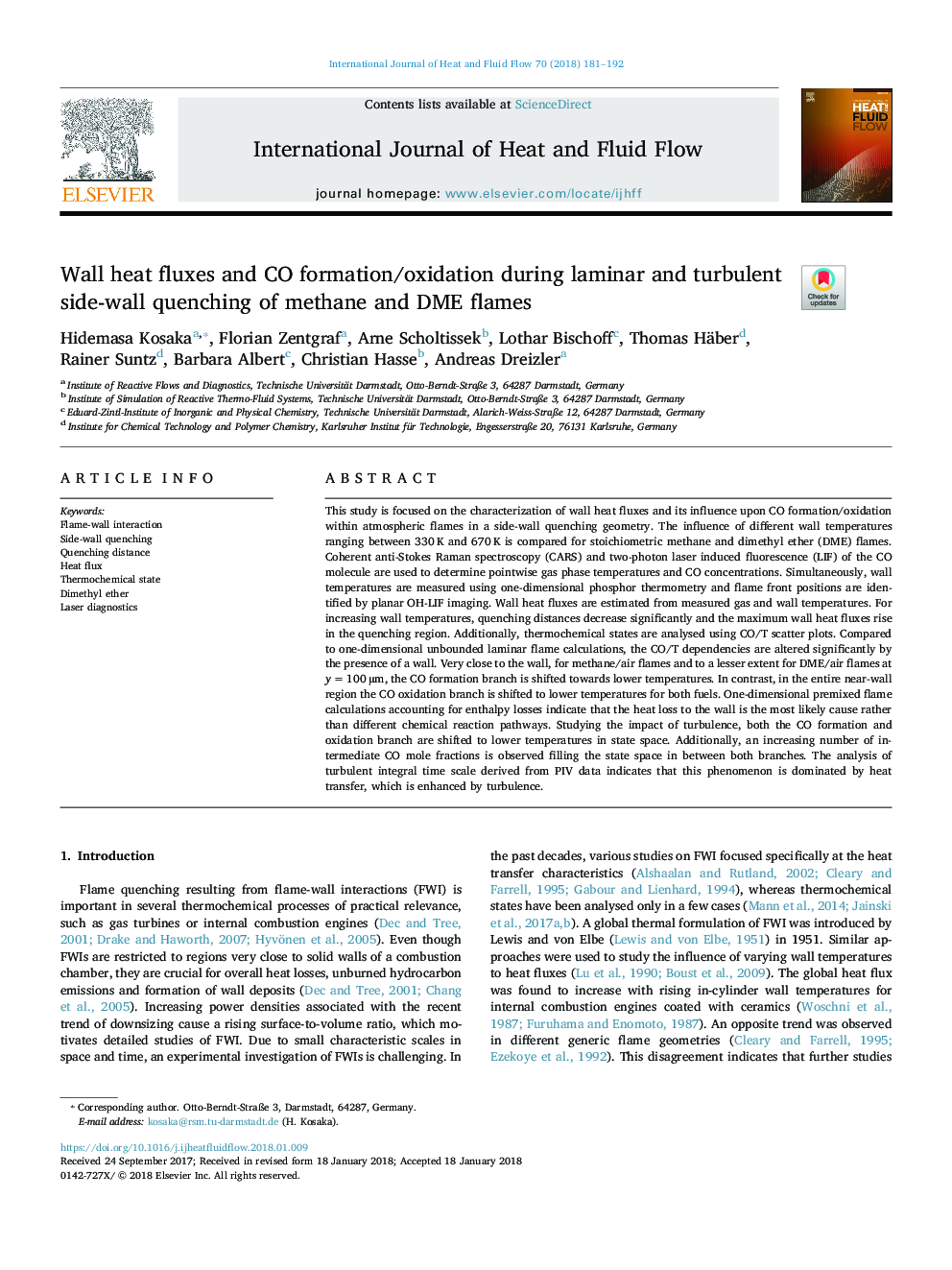| کد مقاله | کد نشریه | سال انتشار | مقاله انگلیسی | نسخه تمام متن |
|---|---|---|---|---|
| 7053498 | 1457608 | 2018 | 12 صفحه PDF | دانلود رایگان |
عنوان انگلیسی مقاله ISI
Wall heat fluxes and CO formation/oxidation during laminar and turbulent side-wall quenching of methane and DME flames
دانلود مقاله + سفارش ترجمه
دانلود مقاله ISI انگلیسی
رایگان برای ایرانیان
کلمات کلیدی
موضوعات مرتبط
مهندسی و علوم پایه
مهندسی شیمی
جریان سیال و فرایندهای انتقال
پیش نمایش صفحه اول مقاله

چکیده انگلیسی
This study is focused on the characterization of wall heat fluxes and its influence upon CO formation/oxidation within atmospheric flames in a side-wall quenching geometry. The influence of different wall temperatures ranging between 330â¯K and 670â¯K is compared for stoichiometric methane and dimethyl ether (DME) flames. Coherent anti-Stokes Raman spectroscopy (CARS) and two-photon laser induced fluorescence (LIF) of the CO molecule are used to determine pointwise gas phase temperatures and CO concentrations. Simultaneously, wall temperatures are measured using one-dimensional phosphor thermometry and flame front positions are identified by planar OH-LIF imaging. Wall heat fluxes are estimated from measured gas and wall temperatures. For increasing wall temperatures, quenching distances decrease significantly and the maximum wall heat fluxes rise in the quenching region. Additionally, thermochemical states are analysed using CO/T scatter plots. Compared to one-dimensional unbounded laminar flame calculations, the CO/T dependencies are altered significantly by the presence of a wall. Very close to the wall, for methane/air flames and to a lesser extent for DME/air flames at yâ¯=â¯100â¯Âµm, the CO formation branch is shifted towards lower temperatures. In contrast, in the entire near-wall region the CO oxidation branch is shifted to lower temperatures for both fuels. One-dimensional premixed flame calculations accounting for enthalpy losses indicate that the heat loss to the wall is the most likely cause rather than different chemical reaction pathways. Studying the impact of turbulence, both the CO formation and oxidation branch are shifted to lower temperatures in state space. Additionally, an increasing number of intermediate CO mole fractions is observed filling the state space in between both branches. The analysis of turbulent integral time scale derived from PIV data indicates that this phenomenon is dominated by heat transfer, which is enhanced by turbulence.
ناشر
Database: Elsevier - ScienceDirect (ساینس دایرکت)
Journal: International Journal of Heat and Fluid Flow - Volume 70, April 2018, Pages 181-192
Journal: International Journal of Heat and Fluid Flow - Volume 70, April 2018, Pages 181-192
نویسندگان
Hidemasa Kosaka, Florian Zentgraf, Arne Scholtissek, Lothar Bischoff, Thomas Häber, Rainer Suntz, Barbara Albert, Christian Hasse, Andreas Dreizler,